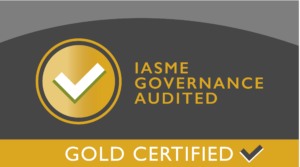
Your first presentation: how to make a great impression
Presentation skills are essential to many professional roles. Some people are great natural presenters and the necessary skills seem almost instinctual. Other people, who look like they are great natural presenters, actually learned their skills through hard work and practice.
Everybody has to start somewhere, and that includes you. Fortunately, being able to give at least a decent presentation is a skill that can be learned fairly easily. Here are four tips:
1. Content is king
Perhaps you’ve had the experience of sending a question to a customer service department, only to receive a response which is obviously a template. Even if it does answer your initial question somewhere in its content, you usually have to work to find the information you need amongst a whole lot of irrelevant data.
If you’ve learned how frustrating it is to be on the receiving end of this treatment, then you should be keen to avoid inflicting it on other people.
Think about who your audience is and decide (or, ideally, find out) what they need to know and what they want to know. Focus on the core content during the presentation and use hand-outs to cover specific information for each focus group.
2. Keep it simple
Overstuffing presentations is the surest way to bore your audiences and filling up slide after slide with text is the standard route to death by PowerPoint.
Think about what you can reasonably cover in the time available to you and, if you feel that isn’t enough then, again, use hand-outs or break-out groups or some other method to cover the extra information your audience really needs to know.
Make sure you give your audience enough breathing space for them to digest what you’re telling them; depending on how long your presentation is, you might do this by simply asking if there are any questions or comments on what you’ve covered so far, or you might even schedule formal breaks.
3. Pacing is powerful
You may want to get your presentation over as quickly as possible but galloping through it so quickly it becomes essentially impossible for most people to follow is just a waste of your time and theirs.
Calm your nerves and hone your skills by practising as much as you need before you actually deliver your presentation for real. Video yourself on your smartphone and actually watch yourself, and on top of that, ideally have other people watch you too and ask them for constructive criticism.
4. Mind your tech
If you’re giving a short and simple presentation to a small group, you may not need any technology, but these days it’s fairly common for presenters to use laptops, projectors and microphones even for fairly standard internal presentations.
Make sure you know what is expected and what you want and make sure that you are comfortable using the technology to the extent that you need to (and how to get hold of technical support if there is a glitch). Nobody in your audience wants to wait around while you get the hang of PowerPoint or connect your laptop to the venue’s tech setup. Prepare in advance and make sure you have tested your connection and performance before you start.



